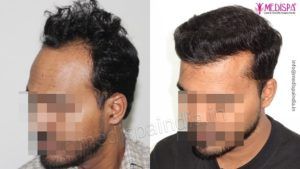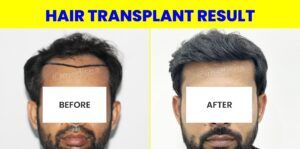
Hair loss is an embarrassment and a mental challenge for those who suffer from it. Hair transplantation is a permanent answer to this problem that has been discovered by science in recent years. Medicines like minoxidil or finasteride, as well as PRP treatment, have been proven to be useful, but hair transplantation is the final resort.
Bangalore has a comprehensive range of medical services and residents have access to up-to-date tertiary level healthcare. There are a few private clinics that do cosmetic procedures like hair transplants, but they aren’t well-known for their work. Hair transplant in Jaipur is widely available, albeit institutions use primitive methods or techniques and have not kept up with advances in technology or international laws.
Although hair transplant cost in Jaipur is comparable, the procedures provided by a few recognised institutions in Delhi and other metro cities are exceptional. Who doesn’t want the best at a fair price, and these cities see a big number of patients each year from all over the world.
The treatment is quite popular in India and across the world. Hair transplantation in Delhi has attracted a lot of interest from individuals all across India. In the hair transplant market, a few chosen hair transplant surgeons in Delhi have set a standard of excellence. Because Delhi is a centre for the hair transplant business, hair transplant costs are relatively low.
These days, Medispa hair transplant clinics in Delhi and Jaipur are the most popular destinations for hair transplant tourism. Dr. Suneet Soni, the clinic’s creator, established it in 2005, and it has been the centre of excellence for hair transplant therapy ever since.
If you’re looking for true answers to your unanswered issues, make an appointment at a Medispa clinic in Delhi or Jaipur now.
Hair transplant: basic procedure
Hair transplantation is a restorative surgical treatment that includes extracting hair grafts from donor locations and transplanting them to the balding area. The method involves collecting hair transplants from the donor location and transplanting them to the target bald area.
Hair transplantation is a very easy process, although it requires careful preparation during the initial consultation. In order to do the treatment with outstanding results, the hair transplant surgeon should complete the consultation holistically.
What is donor and recipient area?
In a hair transplant, the donor area refers to the area where the hair roots are harvested. FUT hair transplant or FUE hair transplant is used to harvest the hair.
In a hair transplant, the recipient site is the place where the hair roots are implanted in the slits. Hair roots are transplanted through slits or channels made in the recipient location.
Donor area and its selection
Because the hair transplant technique involves removing your hair, it’s critical that the donor areas have enough hair follicles to give enough covering. The procedure’s most important prerequisite is that you have enough hair density in your donor locations to be a good candidate.
The back and sides of the head are the most typical donor areas, followed by various body hairs other than the scalp. The rationale behind selecting the donor location is based on the principle that only DHT resistant hair grafts are selected for harvesting because they lack androgenic hormone receptors.
Because androgenic hormones have no effect on these hair transplants, they do not alter. These hair transplants are guaranteed to last for the rest of your life. As a result, we may be confident that hair transplant produces long-term results that appear completely natural.
The locations with permanent hair roots are known as safe donor sites, and they should be properly chosen for hair graft harvesting.
Overharvesting and violation of safe donor area: what does it mean?
What is the donor zone of the scalp? Actually, the donor zone refers to the region that contains the permanent or DHT-resistant hair roots. The significance of this location is that if hair roots are collected from here, the results will undoubtedly be permanent, which is the most significant benefit of the hair transplant surgery.
In most situations, untrained surgeons try to overharvest the region in the hopes of giving a high-density hair transplant or to compensate for the increased damage to hair grafts they create during the process. Both methods have a negative influence on the final results since the hair roots do not survive transplanting and you likely to lose them.
As a result, it is vital to select the appropriate location for the harvesting of hair roots, also known as a safe area. When the donor region is over harvested, the hair density depletes and the donor area appears sparse, resulting in another unsuccessful hair transplant.
So, in order to acquire the greatest results and save your hair follicles, you must locate the right hands to do the treatment.







